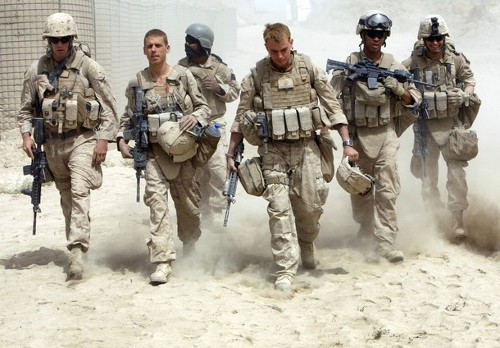
The traditional U.S. solution to military threats has generally been to spend rather than think our way clear of danger. With the wind down of the wars in Iraq and hopefully Afghanistan and the state of the economy with debts and deficits that seem endless, U.S. defense budgets will and must decline, probably dramatically.
In these circumstances, the usual plea is “to do more with less.” But that admonishment, however attractive, never works.
How much “less” may be in the cards?
After the Soviet Union imploded and the Iraqi invasion of Kuwait ended in a stunning defeat for Saddam Hussein the Bush 41 administration reduced U.S. forces by about half a million personnel and the budget by 25 percent.
Because of inherent cost growth whether in paying for people or weapons, keeping the U.S. military at the same standard and level of today’s readiness and capability will require about one-third more spending then the political process is likely to approve. Put another way, United States military capability has about one-third more of everything than it can sustain.
How can or should the United States think its way around this fiscal Damoclean sword of descending budgets? There are three basic choices: First, reductions can be spread more or less equally across all military services and capabilities. Second, stringent priorities among ground, air or naval forces can be set with cuts accordingly made. Third, service visions of future forces can be carefully scrutinized in the broader context of national needs and altered appropriately.
As the United States surveys where its military should be headed, in justifying future funding and force structure, each service will revert to the more familiar traditional missions that have persisted for decades. The Army will require forces for high-intensity war against other armies and organized ground forces. The Air Force will use air superiority and the capacity for long-range airstrikes as its rationale. The Navy will argue that nuclear powered aircraft carrier battle groups and submarines provide it the most flexible capabilities. And the Marine Corps will stress expeditionary warfare with amphibious landings against strong opposition as its unique role.
Each of these service positions is understandable and predictable. Their relevance however is much harder to establish with or without the approaching financial tsunami. For the Army, it is difficult to see where it will match up in conventional war against a peer. There are (thankfully) very real armies to fight for a good time to come. For those who see China as a potential adversary, waging a conventional war on the Asian land mass seems “a bridge too far” for the United States.
Air superiority and long- range strikes are missions the Air Force would prefer performing with at least some manned aircraft. That means a new strategic bomber to replace a fleet in which the average age of its aircraft is approaching that of general officers rather than aircrews. Yet, as with the Army, the United States has assured air superiority wherever needed outside a war with China. And cruise missiles surely have long-range punch.
Similarly, the Navy has assured command of the seas against other navies but not always against pirates or terrorists who attack where we “ain’t.” The last time the Marines launched an opposed amphibious assault was at Inchon in 1950 during the Korean War. And that operation was such a surprise that it faced little real opposition.
The problem with this analysis is that it flies in the face of service ethos and culture. So is there a way to overcome these understandable obstacles as we think and not spend our way clear? The answers are yes and rest in people and time.
First, people remain the most crucial resource and must be incentivized accordingly. Incentives are not pay alone. Maintaining high morale and sense of purpose are at least if not more important. To achieve that means reducing overall numbers by around one-third over time in order that the remaining force will be kept at high levels of capability and esprit.
Second, no major military threat is going to materialize quickly, China withstanding. In other words, we have plenty of time to react provided we keep a level of capacity across the entire warfare spectrum. Hence, a portion of our capacity for fighting conventional wars can be put in a reserve or stand down status to be recalled if needed over a period of a year or so.
Third, rather than decommission and replace weapons platforms that still are serviceable, put them in a reduced operational status.
Finally, brains win wars. That means elevating education to provide the learning knowledge and understanding for our military to be better able to cope with a future that will be almost certainly more demanding. Thinking more, while spending less, can and will work.
Harlan Ullman is Seniot Advisor at the Atlantic Council, Chairman of the Killowen Group that advices leaders of government and business, and a frequent advisor to NATO. This article was sindicated by UPI. Photo Credit: Reuters Pictures
Image: US%20Soldiers500x.jpg
